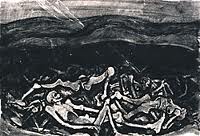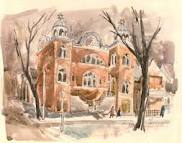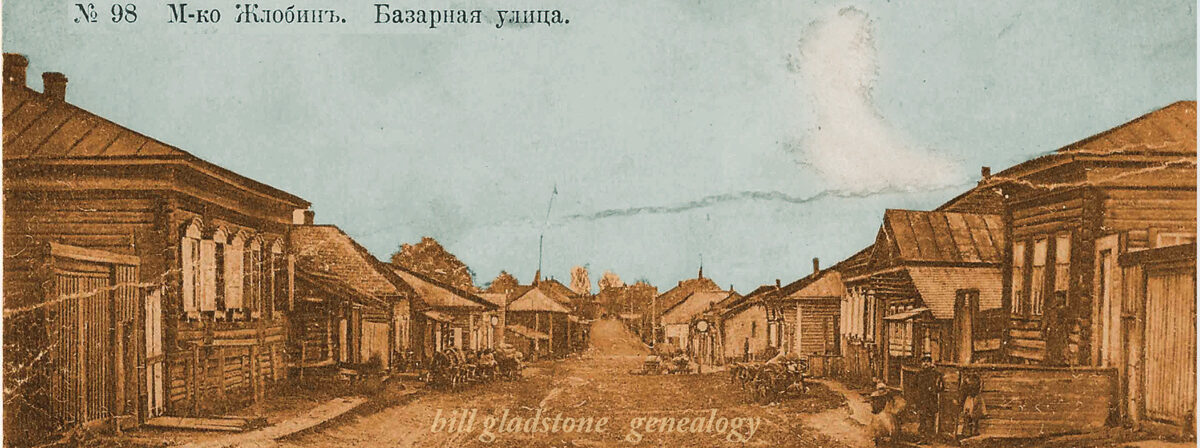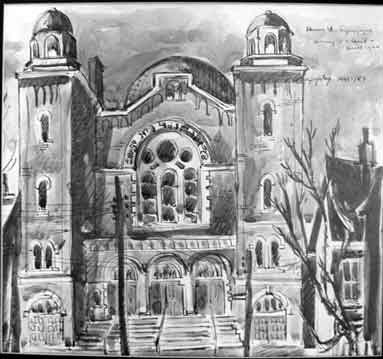It was the 1936 movie Rembrandt starring Charles Laughton that persuaded then-14-year-old student Aba Bayefsky to switch from an academic stream to the art department at Toronto’s Central Tech High School, but it was his experience as an official war artist in Europe during and immediately after WWII that instilled a deep and permanent sense in him of what he should be doing as an artist.
Accepted into the Royal Canadian Air Force, Bayefsky was on assignment at the 39th Reconnaissance Wing in Germany, situated next to Belsen concentration camp. It was war’s end and Belsen had just been liberated. Bayefsky arrived there with his sketchbooks and witnessed first-hand some of the horrors that had befallen the Jewish people.
“I saw pits with thousands of dead bodies piled in them. They were just lumps, that’s all. They had trucks backing up to these pits and they were just throwing them in. It had a profound impact on me. My impressions of Belsen have never gone away. They’re with me today and I see them even more clearly as I grow older. It was a major experience of my life.”
Bayefsky has been painting for at least 60 of his 75 years. Some of his Belsen canvases are on display at the Canadian War Museum in Ottawa, and his work also hangs at the Art Gallery of Ontario, Hart House and in corporate halls and private homes. He has been exhibited in New York, Chicago, London, Tokyo, India.
“I am never blank. I have more material in my mind today than I can possibly use in a lifetime.”
His studio on King St. W. in Toronto is filled with canvases and natural light. Having just returned from a visit to Israel, he has been producing a series of small pieces showing scenes from the Holy Land — the gates and greenery of Jerusalem, the mountains and plains of the Judean desert. The animated shapes and vibrant colors that mark his work are evident. So is the shining passion for life that jumps from the canvas.
 “I’m concerned about making a statement with my work, about what I say as an artist. In the work that I did at Belsen and the post-Belsen work, I want to be clear in what I’m saying. How can I paint things other than those things that have some association with reality for me? I won’t be critical about what other artists do, but art that doesn’t say anything is just meaningless to me.”
“I’m concerned about making a statement with my work, about what I say as an artist. In the work that I did at Belsen and the post-Belsen work, I want to be clear in what I’m saying. How can I paint things other than those things that have some association with reality for me? I won’t be critical about what other artists do, but art that doesn’t say anything is just meaningless to me.”
One wall of the studio holds an enormous canvas of a whale and a ship encountering each other on a joyous sea, and Bayefsky acknowledges that the subject matter came partly from the Biblical story of Jonah and the whale. Another painting, showing three people surrounded by a sea of colorful flames, is a somewhat more obscure allusion to the three Jews Shadrach, Mishach and Abednigo who were burned to death by Nebuchadnezzar when he destroyed the First Temple in Jerusalem.
In seeking subject matter for his work, Bayefsky returns often to Biblical and Talmudic themes. He published a portfolio of paintings called Tales From The Talmud; the Canadian government gave a copy of the portfolio to the late Israeli Prime Minister Menachem Begin when he visited Canada. And he has made thousands of sketches and paintings of Kensington Market, the colorful downtown neighborhood that was once predominantly Jewish.
 Bayefsky’s compositions are also shaped by the mythologies, folk legends and tales of other cultures. He is as apt to explore Talmudic subjects as he is to probe Indian or Islandic legends. He did a series of portraits of people with tattoos, even venturing to Japan where the tattooing art has reached a zenith. He’s also made paintings related to the legendary North American outdoorsman Paul Bunyan. “He’s Canadian, by the way,” Bayefsky declares with evident pride, referring to the larger-than-life folkloric woodsman. “Although the Americans claim him, he’s from a lumber camp in Quebec.”
Bayefsky’s compositions are also shaped by the mythologies, folk legends and tales of other cultures. He is as apt to explore Talmudic subjects as he is to probe Indian or Islandic legends. He did a series of portraits of people with tattoos, even venturing to Japan where the tattooing art has reached a zenith. He’s also made paintings related to the legendary North American outdoorsman Paul Bunyan. “He’s Canadian, by the way,” Bayefsky declares with evident pride, referring to the larger-than-life folkloric woodsman. “Although the Americans claim him, he’s from a lumber camp in Quebec.”
If eclectic, colorful, contemporary and universal are words that might be used to describe Aba Bayefsky, another is accomplished. A member of the Order of Canada, he is a former president of the Canadian Group of Painters, the successor group to the famed Group of Seven. He is also dedicated to his craft. Although the necessity of a twice-weekly dialysis treatment has slowed him down lately, he still usually spends five or six full days a week in his studio.
“I am never blank. I have more material in my mind today than I can possibly use in a lifetime. Years ago I made the philosophical decision of who I am and what I wanted to do. In other words, I’m not under any pressure for inspiration. I don’t have to stimulate myself: it’s all there.
“It took a lot of time for me to decide that reality was central to my thinking, that art and politics go hand and hand. I’m not talking about party politics, I’m talking about what life is. I don’t like to think I’m affected by fashions or fads. I’m very serious about my work and I think it’s not trivial. I believe that what I have to say is important, and I take strength from that.” ♦
© 1997
* * *
Obit: Aba Bayefsky (May 2001)
Aba Bayefsky, the distinguished Canadian artist whose Holocaust paintings are displayed at the Canadian War Museum in Ottawa, has died in Toronto in his 78th year.
Accepted into the Royal Canadian Air Force as a youth, Bayefsky was on assignment at the 39th Reconnaissance Wing in Germany, situated next to Belsen concentration camp. The Canadian government appointed him an official war artist in 1944.
When Belsen was liberated in May 1945, Bayefsky entered the camp with his sketchbooks and witnessed first-hand some of the horrors that had been perpetrated upon the Jewish people. He produced dozens of haunting and grisly canvases related to his Belsen visits.
“I saw pits with thousands of dead bodies piled in them,” he recalled in 1998. “They were just lumps, that’s all. They had trucks backing up to these pits and they were just throwing them in. It had a profound impact on me.
“My impressions of Belsen have never gone away. They’re with me today and I see them even more clearly as I grow older. It was a major experience of my life.”
In seeking subject matter for his work, Bayefsky often utilized Biblical and Talmudic themes. He published a portfolio of paintings called Tales From The Talmud. The Canadian government gave a copy of the portfolio to the late Israeli Prime Minister Menachem Begin when he visited Canada.
Bayefsky was fascinated with his Jewish heritage. He made thousands of sketches and paintings of Kensington Market, the colorful downtown neighborhood in downtown Toronto that was once predominantly Jewish. He painted scenes of Jerusalem and other locales in Israel.
He also explored the legends, mythologies and tales of Indian, Islandic, Japanese and other cultures in his work.
He was a member of the Order of Canada and a former president of the Canadian Group of Painters, the successor group to the famed Group of Seven.
Besides the Canadian War Museum, his work hangs in the Art Gallery of Ontario and in many corporate halls and private homes. He has been exhibited in New York, Chicago, London, Tokyo and India. He is survived by a wife, three children and five grandchildren. ♦
© 2001








